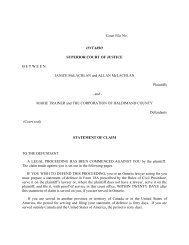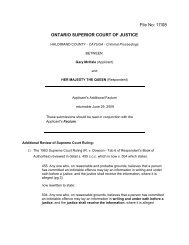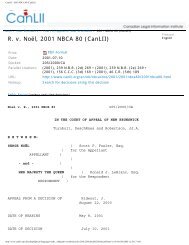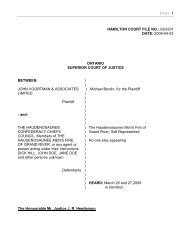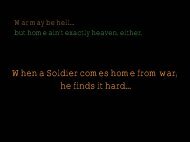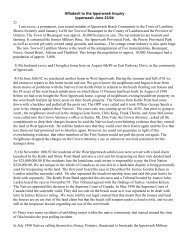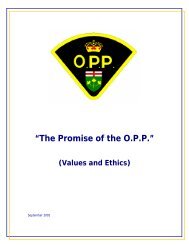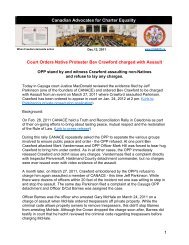Other People's Wars - Caledonia Wake Up Call
Other People's Wars - Caledonia Wake Up Call
Other People's Wars - Caledonia Wake Up Call
Create successful ePaper yourself
Turn your PDF publications into a flip-book with our unique Google optimized e-Paper software.
<strong>Other</strong> Peoples’ <strong>Wars</strong> – Chapter Onewho want to see a different interpretation of the world from the mainstream will interpretall events and developments differently from the rest of us. The conspiracy-myth addictwill cheerfully extrapolate all facts to support his construct of hidden meanings behindevents; the ideologue (and revisionist historians) will subordinate everything to his beliefsystem; and the terrorist will do both.For the terrorist, the construction of a vile de-humanized enemy makes it easier both toconvince him or herself of the rightness of the cause, and to commit violence against thedemonized authority. Even then, it is perhaps significant to note that the terrorists of 30years ago sometimes needed to work themselves up to the level where they could commitlethal violence by staging a series of “learning” attacks with simple Molotov cocktailsand pipe-bombs hurled at empty offices, and then progressing to time bombs, and finallyto becoming psychologically ready to personally deal death to another human being.Today’s terrorist, with his lethal suicide attack, is often the product of a much moresophisticated conditioning system.It must also be said that suicide bombers are not born; they are manufactured – usuallyby isolating the impressionable from all outside influences and ceaselessly conditioningthem. The LTTE had been the world’s leading group for suicide attacks until recently,but evidently the Palestinian Authority’s education system is equal to the challenge ofconvincing large numbers of youngsters to immolate themselves.The terrorist, even as he completes his internal conditioning, will also start working onthe second audience of potential supporters, and will try to persuade them to see theworld his way. Sometimes, this is fairly easy; but often, some very elaborate mentalconstructions are required.Jacques Ellul, in his masterwork on propaganda, essentially described it as a processdesigned to get people to take a particular action (or inaction) and convince them to get toa condition of self-reinforcement to sustain their new belief system. 24 Propaganda tendsto fall into three general categories based on the approach that is used: Freudian,Pavlovian, or using a system based on Dewey’s educational theories. For the first twoapproaches, it is necessary to have a degree of preconditioning to associate people withthe symbols and concepts that the propagandist intends to use and manipulate.Sometimes, the preconditioning phase is very easy. For example, both the IrishRepublicans and the Protestant militants in Ulster needed to do very little to familiarizetheir intended audiences with their symbols and concepts – both sides already had verywell developed mythologies and versions of Anglo-Irish history that most of theiraudiences already knew very well. It is also significant that Sikh militants fell back onthe garb of 16-17 th Century warriors – who had to defend the emerging Sikh religionagainst ferocious persecution by Muslim invaders. The inference was that the Punjabiinsurgents were again defending t he faith. Marxism is a well-defined politicalphilosophy (even if it has been discredited) that can be easily grabbed by any malcontentand pressed into service with only some local refinements.<strong>Other</strong> ideologies can be much stranger. Sometimes, as was the case with the Soviets,the collision between reality and their ideological gestalt left people with bifurcated belief24 E.llul, Jacques: Propaganda: Formation of Mens’ Attitudes, New York; 196520



